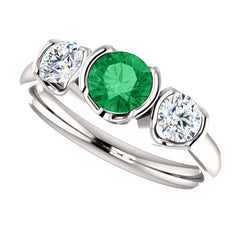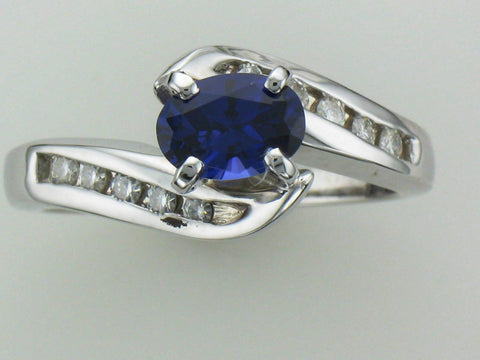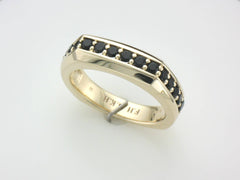Save money on loose gemstones at Chimera Design. The more you buy, the more you save.
Diamonds grown in laboratories offer the beauty and durability of mined diamonds at a fraction of the price.
Cliff was never a big fan of Moissanite. That all changed in 2015 and he explains why in this blog post.
This is the first of FOUR ways we offer engagement rings (and other jewelry) to YOU. We have a Showcase App that will let you try hundreds of configurations from your phone, laptop, or PC. Not only will you get instant images to see the changes you make, you also get real time estimates for what it will cost.

Above are 5 completely different designs Cliff did on the Chimera Showcase.
Simply click on the link here, then choose "Flexible Designs" and give it a try. It is FREE and you can try out all kinds of combinations with no risk or obligation. If you settle on a design you love, click "Add To Quote" and Cliff will contact you with a solid estimate on the price for your creation.
Click Here: Chimera Showcase.
Here are some examples of rings design by our customers using this app. The image on the left is taken from the Chimera Showcase and on the right is the actual finished ring.
First, is a 14kt white gold ring we made with Deb. She had inherited two diamonds from her mom and wanted to have a ring to remember her with. She wanted her birthstone (May - emerald) in the center of the ring. She considered several different shapes for the center, before settling on a round slightly larger than the two diamonds.


Next is a ring for Will and Allyson. Allyson is concerned about the environment and wanted to use only lab created gems. So we used Moissanite for the accent stones - Moissanite is a lab grown substitute for diamonds - combined with a lab created sapphire in the center. We started with a round center, but ended up with the oval shape lab sapphire you see on the right.


Just so you know the Chimera Showcase is NOT just for the ladies, here is a ring designed for Frank using the app. He wanted a modern, updated version of yellow gold and black onyx - a classic combination for men.


As you can see - there are almost limitless possibilities for YOU to create your dream engagement ring with the Chimera Showcase app.
Click and design!
Spend any time at our store and you will probably hear one of us talking about gemstones that are "lab grown" or "lab created". Or you might read that somewhere on the net or hear it on one of the jewelry channels. So, what the heck does it mean?
There is a very big difference between a "synthetic" ruby and a "lab created" ruby. A "synthetic" ruby can be any material that is manufactured to have the same color as a ruby - it can be any number of materials including plain old glass. A lot of antique jewelry contains colored glass that looks like ruby, sapphire or other gems.
On the other hand a "lab created" or "lab grown" ruby is a gemstone where the crystal material is grown in a laboratory that duplicates the temperatures and conditions that exist when natural ruby crystals grow in the Earth.
Many people believe growing gem crystals in a lab is a fairly recent development, but Carroll Chatham perfected growing emerald crystals in 1938. Once he had the process down for emeralds he went on to grow perfect rubies and sapphires.
These are emerald crystals we purchased from Chatham Labs in California. It takes almost a year to grow emerald crystals big enough to facet into gemstones. (It takes about 90 days to grow sapphires and rubies.)
After a year, emerald crystals are big enough to be cut and polished into gemstones that are ready for jewelry. Natural emeralds as free of imperfections as those pictured above are possible to find, but they can cost tens of thousands of dollars. On the other hand, lab-grown emeralds cost hundreds of dollars.
Here at Chimera, we love ALL kinds of gemstones. We have a great source in Michigan for natural rubies and sapphires, but we also make a lot of our jewelry using lab-grown gems from our supplier in New Jersey (they have great prices, which we pass along to you.)
We also have beautiful jewelry from our friends at Strellman's. Almost all of the pieces in the Strellman line utilize lab-grown gems. This has been the case since the beginning when Mr. Strellman perfected his Lighthouse Lens cut (seen below). In order to produce this unusual cut, the amount of waste that occurs by cutting the stone along both axis' would make the use of natural rubies and sapphires not only cost prohibitive, but it would be a terrible waste of gem material.
One last note - diamond crystals, made of pure carbon, are also being grown in laboratories. I do not mean Moissanite, cubic zirconia or other diamond substitutes, but pure carbon crystals. However, at this point the price difference between lab-grown diamonds and natural diamonds is only 15-20% and has not really captured jewelry shoppers with the exception of those who would prefer to buy a man-made gem because of the environmental aspect.
But you can be sure as the technique for growing diamonds spreads and is put into practice more places, the price will drop to a place where it will be similar to what has happened with rubies, etc.
If you have a question about jewelry, diamonds, or gemstones - send to Cliff and he will do his best to answer it for you.









